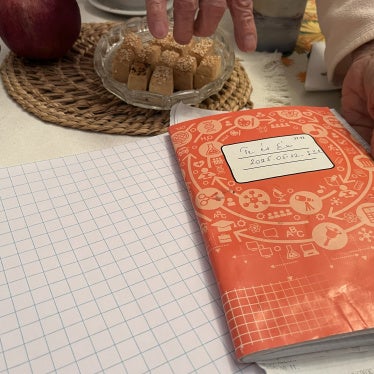(Translation of the op-ed published on the French website Rue89.)
“This is the math class, and now this is not a class, this is a bunker of the army,” exclaims a young South Asian girl surveying a school classroom. In her voice is a touch of despair, tinged with a dose of disgust. Her tone turns to disappointment:
“I was very proud of my army, that the army protects us, but when I see my school in this way, so I am very shameful of my army.”
Later this week, this girl will travel to Oslo and collect her Nobel Peace Prize.
The moment in the classroom is captured in a documentary about Malala Yousafzai’s life filmed in 2009, before the Taliban’s attempt on her life. The scene comes from the moment Yousafzai learns that when her family was in exile from their hometown during fighting, the Pakistani army had taken over one of her father’s schools and used it for military purposes.
Armored vehicles in gymnasiums
In my investigations around the world for Human Rights Watch, I have frequently seen warring groups convert schools into bases by encircling playing fields with barbed wire and filling classrooms with sleeping cots for soldiers. They establish fortifications atop school buildings to survey the surrounding area, and they position snipers in classroom windows. They stack rifles in hallways, hide grenades under desks, and park armored vehicles in gymnasiums.
The practice endangers students and teachers by turning their schools into targets for enemy attack. Students and teachers have been injured and killed in such attacks. It also exposes students to sexual violence, forced labor, and forced recruitment by the soldiers sharing their schools. Students must either stay at home, their education interrupted, or study alongside armed fighters while potentially in the line of fire.
In the past decade, armed forces—and even peacekeeping forces—have used schools in at least 25 countries with armed conflict, including in Africa, the Americas, Asia, Europe, and the Middle East. This is a global phenomenon that needs a global solution.
Despite broad international law requiring parties to armed conflicts to spare civilians the hazards of war as much as possible, the lack of explicit standards or norms protecting schools from use to support the military effort means that fighting forces often use education institutions for various purposes.
Upcoming event in Geneva
Next week, that’s all going to start to change.
At an event to be held at the United Nations in Geneva, the ambassadors of Norway and Argentina will unveil a proposal for better protection of schools from this kind of military use during war.
This proposal involves encouraging both government armed forces and non-state armed groups to incorporate six straightforward guidelines into their military policies and training. The guidelines were developed through consultations with experts from each region of the world, ranging from representatives of armed forces and defense ministries to children’s rights organizations and UN agencies.
The Protecting Schools from Military Use Guidelines bring together existing obligations under the laws of war and international human rights law, and combine them with examples of good practice already used by some armed forces.
As a result, the guidelines are neither naïve nor idealistic, but practical and realistic. They acknowledge that parties to armed conflict are invariably faced with difficult situations requiring pragmatic solutions.
Necessary changes in France’s doctrine
During the development of these guidelines, France’s defense and foreign affairs ministries provided crucial technical advice that contributed extensively to their final structure and the content. France should turn its supportive words into concrete action.
France should use next week’s event in Geneva to announce its readiness to formally endorse the guidelines during an international conference planned by Norway for 2015.
France should use the intervening months to prepare the necessary and appropriate mechanism for implementing the content of the guidelines in French military doctrine.
France would also be well-placed to provide technical assistance to armed forces throughout the Francophone world so they too can make the necessary changes in their own doctrine and practice to better protect schools from military use.
Knowledge used to build peace
Countries where military use of schools has interfered with children’s safety and education in the past few years—such as Central African Republic, Cote d’Ivoire, the Democratic Republic of Congo, and Mali—should be a priority. A commitment to share with Norway the task of bringing NATO policy into line with the guidelines’ protections would also be welcomed.
Malala Yousafzai’s rebuke of the army’s misuse of her father’s school sends a signal to armies everywhere that even children can recognize that something is wrong with this common and insidious practice.
By implementing the protections outlined in the guidelines, and urging other countries to do likewise, France can help better guarantee children’s rights to education, no matter where in the world they live.
Ensuring safe access to education, even during wartime, is crucial for children’s safety, sense of normalcy, and development, and for ensuring that countries have the necessary skills to build peace following war.
-----------------
Bede Sheppard is the deputy children’s rights director at Human Rights Watch.







